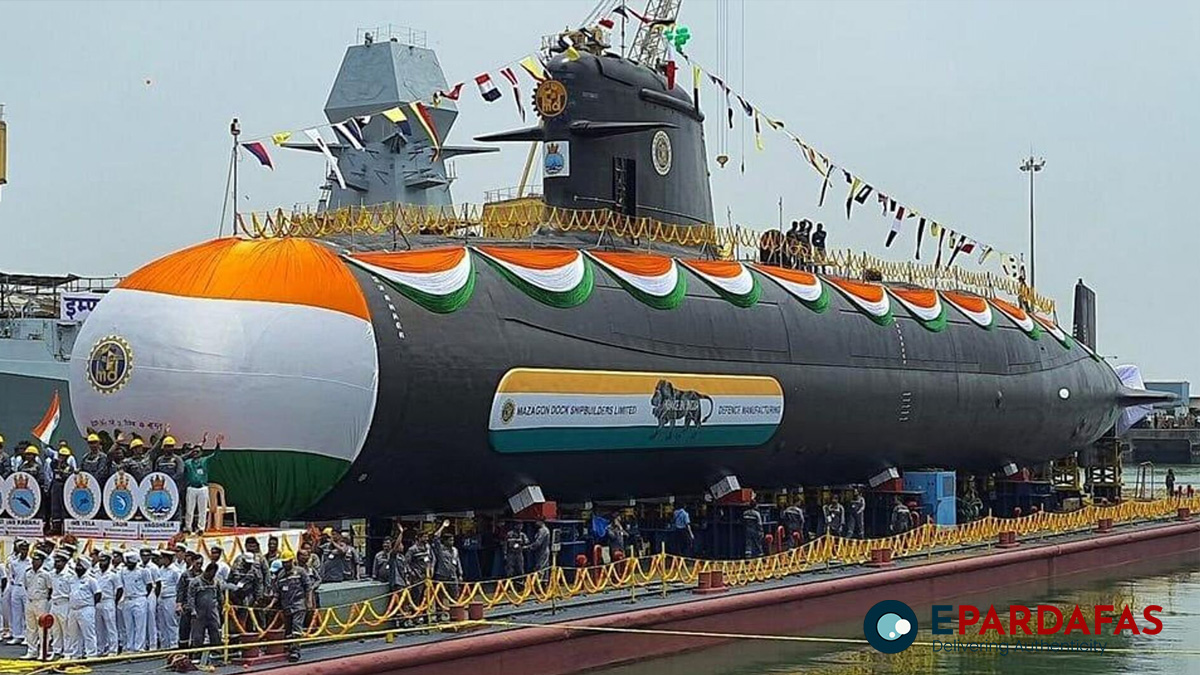
India Expands Nuclear Deterrence with Commissioning of Second Ballistic Missile Submarine
India has bolstered its nuclear deterrence capabilities with the addition of its second homegrown ballistic missile submarine, INS Arighaat, to its naval fleet. This marks a significant expansion in India’s defense strategy, particularly in the context of its nuclear triad.
The INS Arighaat, following the INS Arihant commissioned in 2016, is expected to further strengthen India’s nuclear triad, enhancing the country’s ability to maintain strategic balance and peace in the region. “Arighaat,” a Sanskrit term meaning “destroyer of enemies,” is a 6,000-tonne nuclear-powered submarine equipped with ballistic missiles capable of carrying nuclear warheads with an estimated range of 750 kilometers.
During the commissioning ceremony on Thursday in Andhra Pradesh, Defence Minister Rajnath Singh emphasized the importance of this addition to India’s defense arsenal. “Arighaat will further strengthen India’s nuclear triad, enhance nuclear deterrence, help in establishing strategic balance and peace in the region,” Singh said, according to a Defence Ministry readout.
Singh also hinted at the broader strategic implications, particularly concerning China’s expanding presence in the Indo-Pacific region. The relationship between India and China has been tense, with both countries locked in a prolonged standoff along their disputed Himalayan border. “It is essential for us to develop rapidly in every field, including defense, especially in today’s geopolitical scenario,” Singh noted. “Along with economic prosperity, we need a strong military.”
India’s defense strategy has long included a “no first use” nuclear policy, as outlined in its official nuclear doctrine released in 2003. However, the country has significantly increased its defense spending in recent years, reflecting its growing focus on bolstering military capabilities.
Experts have highlighted the strategic importance of India’s nuclear ballistic missile submarines. “Nuclear ballistic missile submarines are important deterrence assets, offering India a reliable second-strike capability in the event of a nuclear first strike by an adversary,” said Abhijit Singh, senior fellow at the Observer Research Foundation, a New Delhi-based think tank.
Looking ahead, India is on track to commission a third nuclear submarine, the 7,000-tonne INS Aridhaman, next year. This submarine is expected to be equipped with ballistic missiles capable of reaching targets up to 3,500 kilometers away, further extending India’s strategic reach.
The addition of these submarines’ underscores India’s role as a key security provider in the Indian Ocean Region, where safeguarding maritime areas is crucial to the nation’s strategic interests and energy security. “Given that India positions itself as a net security provider to the Indian Ocean Region and depends on global maritime commerce for its energy requirements, securing the maritime area in the Indian Ocean is vital to India’s strategic interests and energy security,” said Tuneer Mukherjee, a maritime security analyst.
As India continues to enhance its military capabilities, the commissioning of INS Arighaat represents a significant step forward in securing its strategic interests and maintaining a balance of power in the region.













Comments